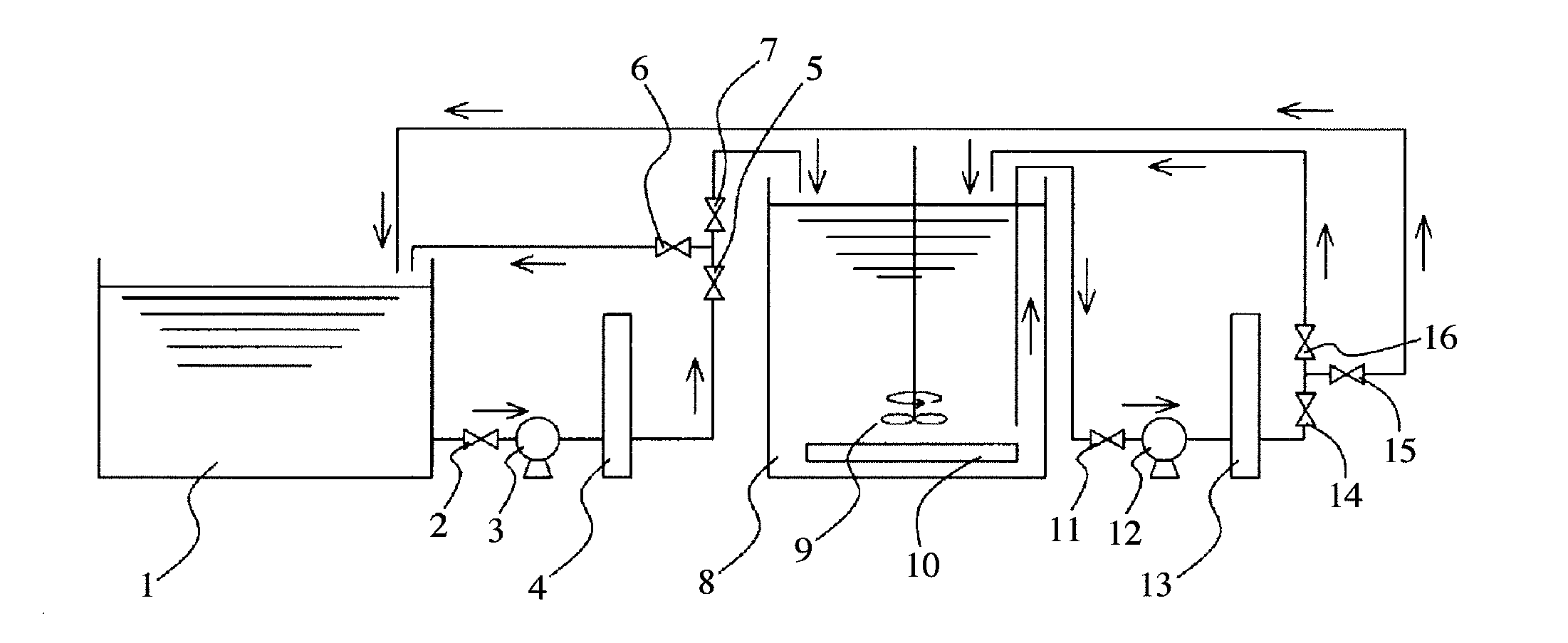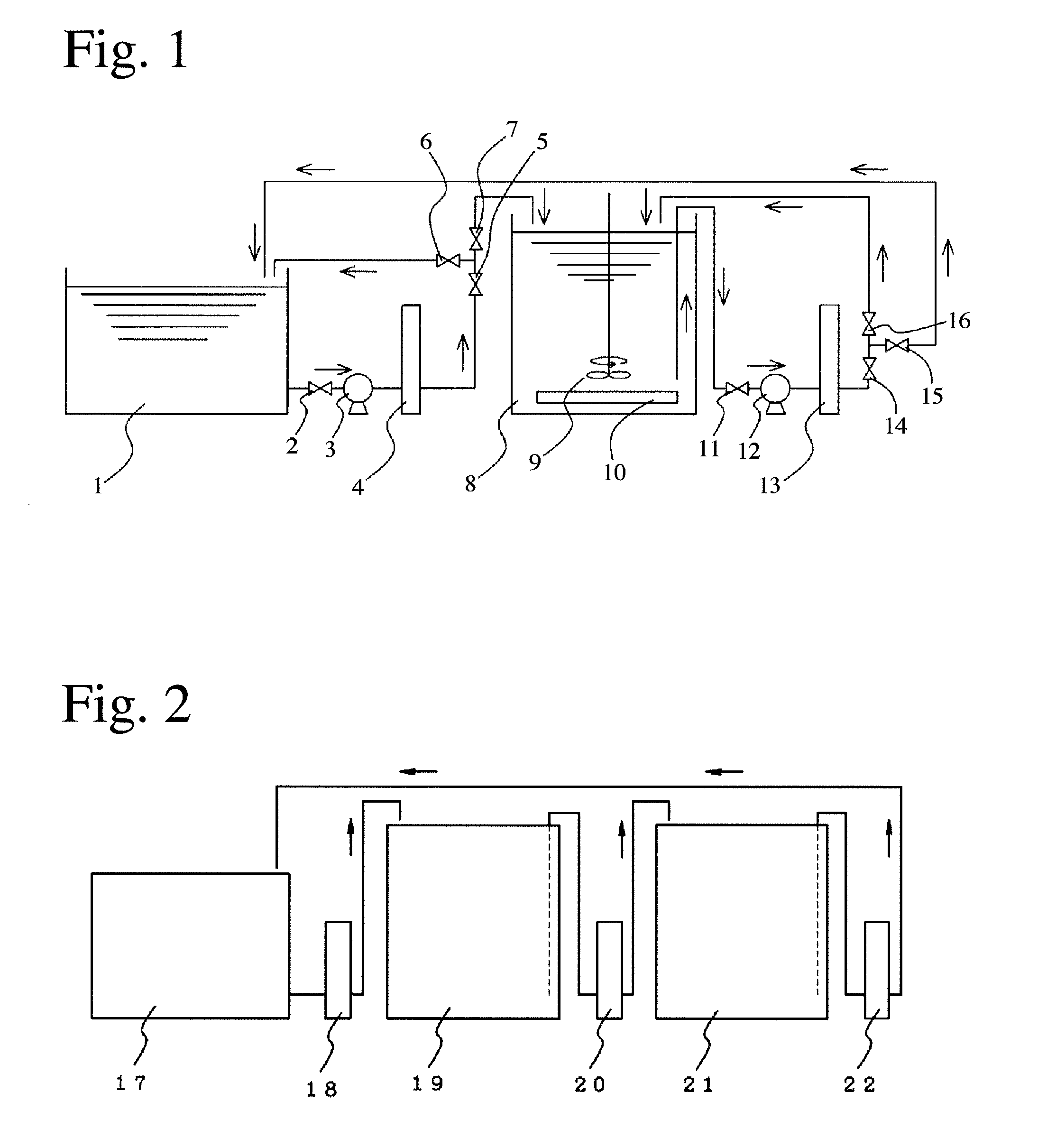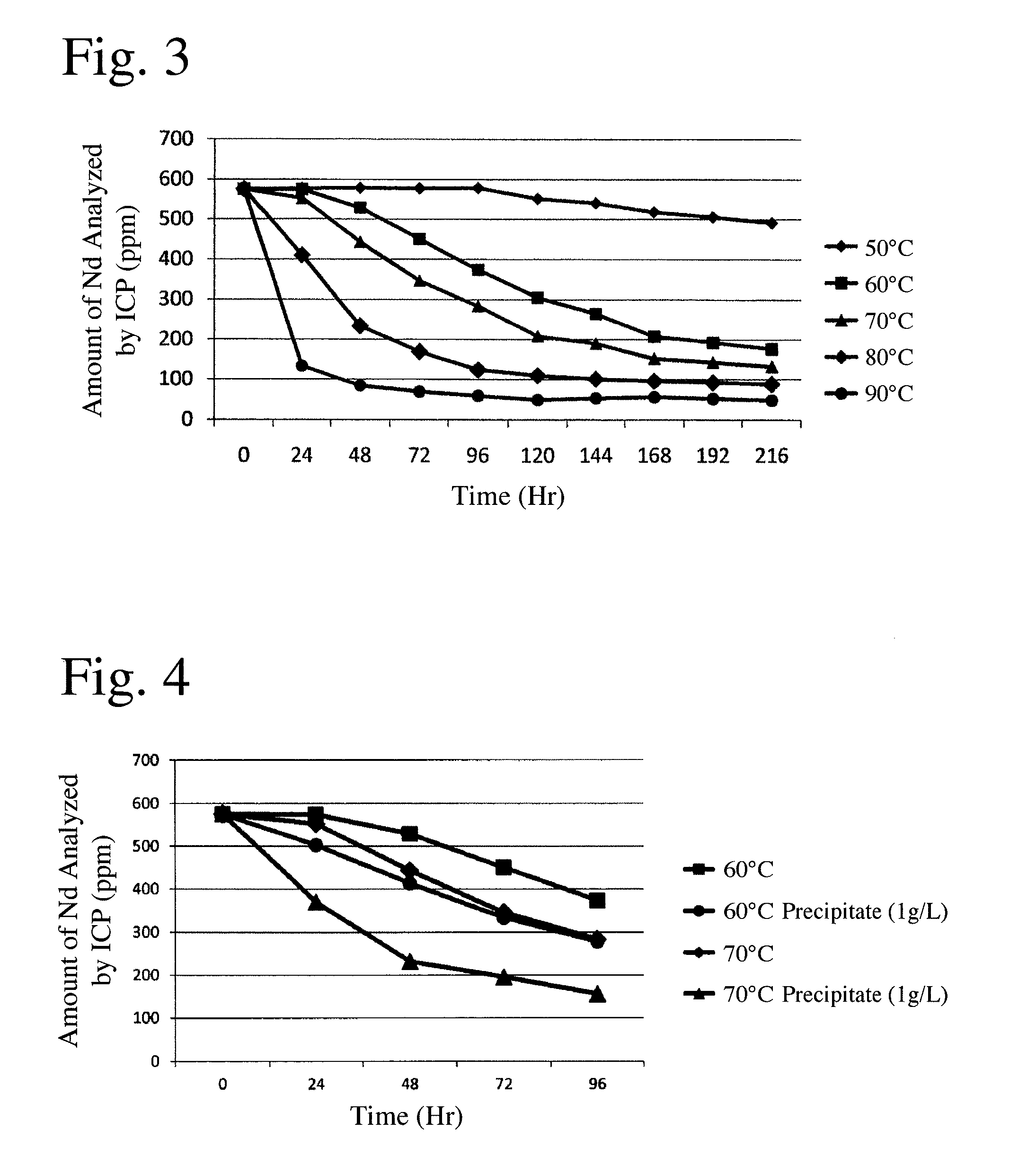Method for removing rare earth impurities from nickel-electroplating solution
a technology of rare earth impurities and nickel-electroplating solution, which is applied in the direction of electrolysis components, electrolysis processes, cells, etc., can solve the problems of affecting the quality of nickel-electroplating solutions, etc., to achieve the effect of removing rare earth impurities from a nickel-electroplating solution
- Summary
- Abstract
- Description
- Claims
- Application Information
AI Technical Summary
Benefits of technology
Problems solved by technology
Method used
Image
Examples
example 1
[0051]A plating solution of pH 4.5 having a composition comprising 250 g / L of nickel sulfate, 50 g / L of nickel chloride and 45 g / L of boric acid was heated at 50° C., to carry out nickel electroplating on various types of sintered R—Fe—B magnets in a composition range comprising 15-25% by mass of Nd, 4-7% by mass of Pr, 0-10% by mass of Dy, 0.6-1.8% by mass of B, 0.07-1.2% by mass of Al, and 3% or less by mass of Cu and Ga, the balance being Fe, depending on necessary magnetic properties. In each batch, magnets having the same composition were used. The composition and amount of rare earth impurities dissolved in the plating solution differ depending on magnets to be plated, a plating method such as a barrel type or a rack type, and the composition of the plating solution.
[0052]After plating for several days, the impurities of Nd, Pr and Dy in the nickel-electroplating solution were analyzed by an ICP atomic emission spectrometer. The analysis results were 500 ppm of Nd, 179 ppm of ...
example 2
[0056]A plating solution of pH 4.5 having a composition comprising 250 g / L of nickel sulfate, 50 g / L of nickel chloride, and 45 g / L of boric acid was heated to 50° C. to carry out nickel electroplating on sintered R—Fe—B magnets having the same composition range as in Example 1. After plating for several days, analysis revealed that the amount of Nd, an impurity, in the nickel-electroplating solution was 576 ppm.
[0057]The above plating solution each 3 liters was introduced into beakers and heated at a temperature increasing from 50° C. to 95° C. by 6 steps (5 steps elevating every 10° C. between 50° C. and 90° C.). During heating, stirring was conducted by a magnet stirrer. During heating, water was supplied such that the concentration of the plating solution was kept constant, and the plating solution in a sufficient amount for ICP atomic emission spectrometry was taken at constant intervals, filtered, and then analyzed with respect to the amount (concentration) of Nd, an impurity,...
example 3
[0059]The plating solution heated in Examples 1 and 2 was filtered by a filter paper to collect precipitate. The precipitate was dried in a thermostatic chamber. The dried precipitate was in the form of powder (solid). Analysis by an energy-dispersive X-ray spectrometer (EDX) revealed that the precipitate comprised by mass 32.532% of Nd, 11.967% of Pr, 1.581% of Dy, 0.402% of Al, 7.986% of Ni, 0.319% of C, and 45.213% of 0. It was confirmed that rare earth impurities were precipitated in the form of powder (solid) from the plating solution by heating.
PUM
| Property | Measurement | Unit |
|---|---|---|
| temperature | aaaaa | aaaaa |
| boiling point | aaaaa | aaaaa |
| boiling point | aaaaa | aaaaa |
Abstract
Description
Claims
Application Information
 Login to View More
Login to View More - R&D
- Intellectual Property
- Life Sciences
- Materials
- Tech Scout
- Unparalleled Data Quality
- Higher Quality Content
- 60% Fewer Hallucinations
Browse by: Latest US Patents, China's latest patents, Technical Efficacy Thesaurus, Application Domain, Technology Topic, Popular Technical Reports.
© 2025 PatSnap. All rights reserved.Legal|Privacy policy|Modern Slavery Act Transparency Statement|Sitemap|About US| Contact US: help@patsnap.com



